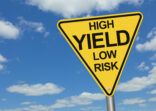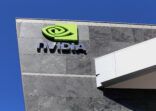After another strong run for the S&P 500 index, it has become commonplace to talk about the over-valuation of the US market. Investors appear to recognise its strengths – leading technology innovation, high earnings, a dynamic corporate culture – but are increasingly balking at the price they have to pay. Are high valuations a reason to avoid the US market?
At an aggregate level, the S&P 500 looks highly valued. At the end of July, it has notched up five consecutive months of gains and its historic price-to-earnings ratio stood at 23x. Its dividend yield is just 1.5%. This compares to 21x for the MSCI World (which is 70% weighted to the US), but just 14x for emerging markets, 11x for the FTSE 100 or 12.6x for the Eurostoxx 50.
While this is high relative to its peers, it is not particularly high relative to the index’s recent history. Since the 1990s, the S&P 500 has frequently traded at or around these levels. It moved to over 40x in the early 2000s, and to over 60x at the time of the financial crash. It has only traded below 20x for relatively short periods. It could be argued that the P/E ratio should better reflect an imminent recession, but that is a different consideration.
It is also difficult to ignore the distorting influence of a handful of technology and consumer stocks – the usual suspects of Amazon, Alphabet, Microsoft, Nvidia, Tesla, Meta and Apple: Amazon is on a P/E of 103x, Nvidia’s P/E is 204x, while Tesla’s is 72x. The ratios for the other mega caps are lower, but still well above the wider market norm.
Few doubt that these prices are high. They have moved higher since the start of the year on the back of expectations on the growth of artificial intelligence. While groups such as Goldman Sachs argue that investors underestimate the potential gains from AI, recent results from the mega caps have shown that considerable investment may be required before those AI gains can be realised.
Peter Ewins, trust manager at the Global Smaller Companies Trust, agrees: “AI hopes may be running ahead of reality. US equity headline valuation metrics as a result tend to look quite extended compared to other global markets given the scale of some of these businesses in market cap terms.”
Rupert Rucker, investment director for US small and mid cap at Schroders, points out that the current pattern has precedent: “In 2000, there was a similar concentration in a handful of names, even if they were not as profitable as the current market leaders. However, following the crash in 2000, the Nasdaq drifted for many years.” This would suggest these companies look vulnerable. It is worth noting that of the market leaders in 2000, only Microsoft is among the current group.
However, even if these companies appear to be at risk, there are still a lot of other companies in the US market and there valuations are more realistic. Rucker says valuations for small cap, for example, are at historic lows compared to large cap.
Ewins agrees: “After a challenging few years with the pandemic, then more recently the period of higher interest rates, smaller stocks have tended to lag the market leaders and we do see some interesting value in the lower echelons of the market, notably in areas most impacted by the recent slowdown, such as some of the industrial cyclicals and real estate for example.
“These should respond favourably to the eventual peaking of interest rates”.
He says that there are also areas seeing significant structural growth, such as those benefitting from the Inflation Reduction Act or Chips and Science Act passed in 2022.
There are some other caveats to the prevailing narrative that the US is expensive. Will McIntosh-Whyte, fund manager, Rathbone multi-asset portfolios, says the nature of the US market also helps explain this valuation differential: “The index composition is quite different at a sector level. For example, Europe has a higher weight to industrials, energy, materials and financials.
“These are industries where you would tend to expect the companies to trade on lower P/E multiples than, for example, technology and communication services sector companies, which tend to exhibit higher levels of sustainable growth and therefore can attract a sustainably higher premium for those quality and more resilient earnings.
“The US has a much higher weight in the index to companies which fall into those latter categories. This structural difference means that perhaps it would be unlikely, or even unreasonable, to expect US and European indices to trade on a similar multiple.”
Equally, says McIntosh-Whyte, US companies tend to score higher on ‘quality’ characteristics, such as lower debt, high and defensible margins, high and sustainable growth, attractive returns on invested capital, dominant positions in their end markets and resilient earnings: “We are looking across the globe for companies exhibiting those quality characteristics, which often come at a premium. More companies listed in the US have ticked those boxes for us for some time and that is yet to change.”
A second question is whether this matters. This is not the first time investors have fretted that the US market is expensive and it continues to make progress. Ewins points out that the US equity market has looked expensive relative to other markets for protracted periods in the past, yet has still managed to deliver superior returns: “The breadth of opportunities in the market combined with a shareholder friendly culture makes it a fertile place for stock-pickers.”
The over-valuation in the US market is largely confined to a handful of stocks. The problem is that many investors have grown used to buying the index and are therefore most exposed to those expensive areas. The solution is relatively straightforward: return to stock-picking fund managers who are looking in other parts of the index. However, the association with the US and mega caps is strong: investors may have forgotten there are thousands more stocks to choose from.
This story first appeared on our sister publication, Portfolio Adviser.

















